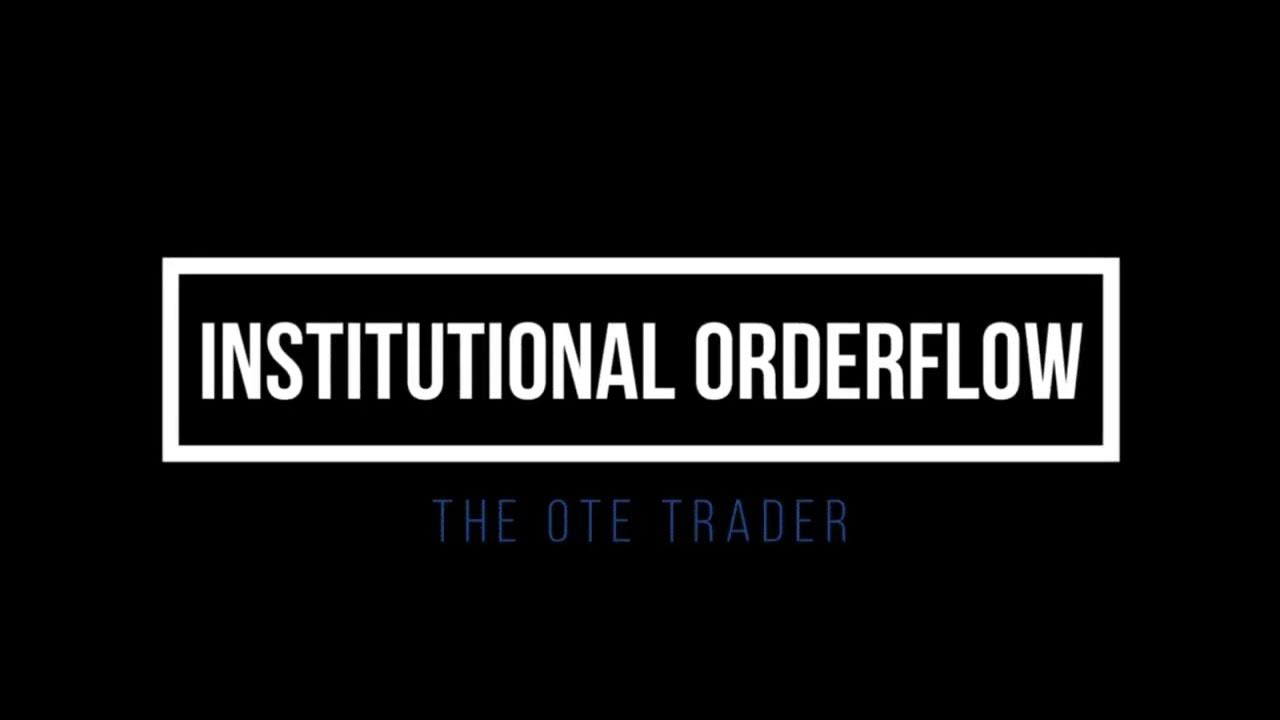3. Order flow
Summary
TLDRIn this technical analysis series lesson, we delve into the basics of institutional order flow, exploring how significant market movements are influenced by institutional trades. We cover the concepts of liquidity, liquidity pools, and the strategic placement of stops by retail traders, providing insight into how institutional traders engineer liquidity to execute large orders without causing market disruption. Through practical examples and chart analyses, we illustrate the concept of stop hunting and how it plays a crucial role in understanding market dynamics. The lesson emphasizes the importance of recognizing high probability liquidity pools and offers strategies to avoid being caught in stop hunts, aiming to enhance trading strategies by incorporating institutional order flow insights.
Takeaways
- 💭 Institutional order flow is crucial for understanding market movements and can significantly change how one perceives the markets.
- 📈 Markets are influenced by the actions of institutional traders who face unique challenges due to the size of their trades, including slippage and front running.
- 💡 Engineering liquidity is a strategy used by institutional traders to create the necessary conditions for executing large orders without drastically affecting the market.
- 🤷♂️ Liquidity pools are areas with a high concentration of stop losses or pending limit orders, acting as untapped sources of liquidity.
- 🔨 Stop hunting occurs when price moves to trigger the stop losses, creating liquidity for institutional traders to enter or exit positions.
- 👀 Identifying high probability liquidity pools involves looking for areas where retail traders are likely to place their stops, such as below swing lows or above swing highs.
- 📉 Not every swing high or low qualifies as a liquidity pool; selection should focus on those with significant market attention and visibility.
- 🚨 Strategies for retail traders to avoid being caught in stop hunts include adjusting stop placement, monitoring price action, and understanding market dynamics.
- 💰 Trading involves risks, and understanding institutional order flow can provide an edge, but it's not foolproof or a guarantee of success.
- 📺 The script emphasizes the importance of education and practice in trading, recommending following experienced traders and utilizing demo accounts to hone skills.
Q & A
What is institutional order flow in the context of financial markets?
-Institutional order flow refers to the buying and selling orders executed by large institutional investors, which can significantly influence market prices due to the size of their trades.
Why do institutional traders face difficulties executing large orders?
-Institutional traders face difficulties such as slippage and front running because their large orders can significantly impact the market price, making it hard to execute orders at the desired price without moving the market.
What is slippage in trading?
-Slippage occurs when there is a difference between the expected price of a trade and the price at which the trade is actually executed, often resulting in a worse price for the trader.
How do institutional traders engineer liquidity?
-Institutional traders engineer liquidity by creating conditions that encourage trading at certain levels, thereby ensuring that there are enough buyers or sellers at those levels to fill their large orders without significantly moving the market.
What are liquidity pools?
-Liquidity pools are areas in the market where there is likely to be a concentration of limit orders or stops, offering a source of liquidity that can be tapped into by traders looking to execute large orders.
What is stop hunting?
-Stop hunting is a strategy where traders intentionally push the price to levels where many stop-loss orders are placed, triggering them to create sudden price movements that the hunters can profit from.
How can retail traders distinguish between a genuine market move and stop hunting?
-Retail traders can look for signs like price action, divergence, and candlestick patterns around key levels, and avoid placing stops at obvious levels to reduce the risk of being caught in a stop hunt.
Why is trading based on institutional order flow considered advantageous?
-Trading based on institutional order flow is considered advantageous because it aligns smaller traders' actions with the movements caused by large institutions, potentially leading to more successful trades by following the market's dominant direction.
What is front running?
-Front running is a practice where traders anticipate large institutional orders and enter positions ahead of them to profit from the subsequent price movement caused by the execution of these large orders.
Why are some assets more influenced by technical analysis and institutional order flow than others?
-Some assets are more influenced by technical analysis and institutional order flow because they have higher liquidity and institutional interest, making their price movements more predictable based on order flow analysis compared to assets dominated by retail traders.
Outlines

This section is available to paid users only. Please upgrade to access this part.
Upgrade NowMindmap

This section is available to paid users only. Please upgrade to access this part.
Upgrade NowKeywords

This section is available to paid users only. Please upgrade to access this part.
Upgrade NowHighlights

This section is available to paid users only. Please upgrade to access this part.
Upgrade NowTranscripts

This section is available to paid users only. Please upgrade to access this part.
Upgrade NowBrowse More Related Video

Blending Time & MMXM | Understand When And Where The Market Moves

NEVER be wrong about the direction of the market again - ICT Concepts (Orderflow)

Episode 9: Identifying Institutional Order Flow - ICT Concepts

ICT Institutional Order Flow Explained – Trade Like the Banks and Outsmart the Market

The OTE Trader - Institutional Orderflow Educational Video - [Inner Circle Trader] Concepts

ICT Mentorship Core Content - Month 03 - Market Maker Trap Trendline Phantoms
5.0 / 5 (0 votes)